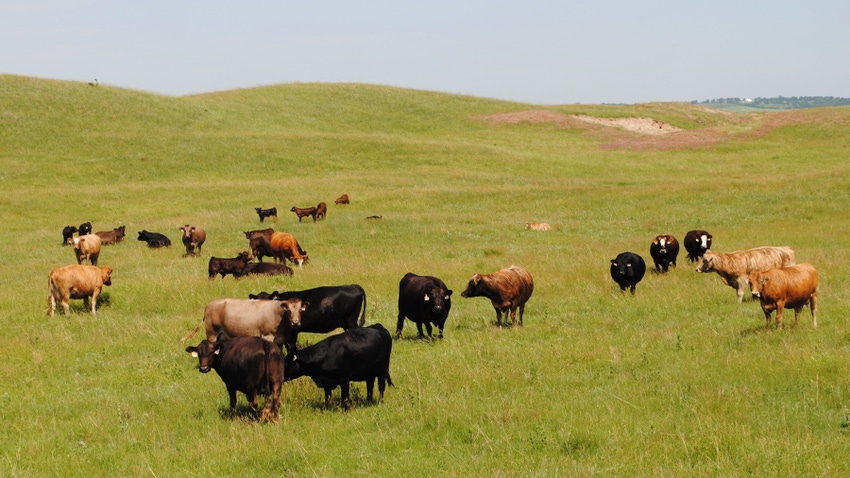
Precision conservation technology can save the world. That might be overstating it a bit, but Andrew Little, University of Nebraska landscape and habitat management ecologist, might agree.
In a research project at UNL’s Gudmundsen Ranch in the Sandhills near Whitman, Neb., Little and his colleagues are working on a virtual fencing project, using precision ranch technology that places collars on cows that can help move the cattle to graze in specific portions of their pastures.
A virtual fence boundary is outlined using GPS, and the collars are programmed to give the cattle an audible warning when they get too close to the “fence line.”
In a recent UNL Center for Agricultural Profitability webinar, Little discussed all of the challenges rural landscapes, habitats and environments are facing.
In the instance of his research, virtual fencing tech could be used to rotate cattle through grazing lands to protect bird-nesting populations and benefit wildlife, along with improving grazing efficiency on those pastures. That’s just one example, Little said, of how precision conservation technology can help tackle major landscape challenges in the Midwest and Plains.
Habitat loss
A changing Midwest landscape, including habitat loss and degradation, is among the greatest challenges.
“Historical farm ground is now in development, moving from rural to an urban landscape,” Little said. “Also, historical non-crop habitat that has not been farmed originally is now in production. That is taking marginal acres and putting them into production, which impacts wildlife populations.”
The Plains and Midwest were once vast grasslands, but now those grasslands are often fragmented, he explained.
“Most landscapes are fragmented into little, tiny parcels, patches of intact grassland,” Little said. “It’s not very connected, so if I’m a pheasant, for example, and I need to make it from Point A to Point B, how do I do that?”
The grassland tracts are separated from each other by agricultural production, so in the wintertime in particular, there is no cover. The landscape is also less diverse.
“There has been declining crop diversity on the landscape,” Little said. “Crop diversity increased until about the mid-1960s. Corn acres have increased, along with soybeans since then. Farmers might remember that pheasant numbers were highest in the 1960s when there was more diversity on the landscape.”
Wildlife populations have been declining, in part, because of declining habitat — not only in Nebraska, but also around the world, he added.
Water quality remains another challenge, with high nitrate concentrations in parts of Nebraska. The Natural Resources Districts, in partnership with farmers, are working on these issues, but they remain challenges, Little said.
And all of these challenges, Little added, come in the face of a growing world population and a need to increase food production by more than 50% in the coming decades.
Tech to the rescue
How can farmers leverage technology and precision agriculture to improve efficiency, productivity and profitability, but find the balance in conserving natural resources?
That’s a tough question, but Little suggested using technologies such as GPS, autosteer, wireless telemetry, remote sensing, virtual fencing, yield monitors, variable-rate irrigation and variable-rate tech to meet production and conservation goals for farmers.
How can conservation tech payoff? Little cited a 17-plus-year prairie strip project conducted by Iowa State University that placed 10% of corn or soybean fields into perennial vegetative strips.
ISU researchers have found that water runoff was reduced by almost 40%. Soil retention was increased 20-fold, and the number of avian species such as songbirds, pheasants and quail improved threefold.
The benefits to wildlife and soil health are easily defined, but how can farmers practically improve their bottom line using conservation tech? Little said that the yield monitor data in specific fields may hold the answer.
On marginal parts of crop fields where, year after year, there are revenue losses or only marginal returns, conservation practices could be employed.
If those parcels are taken out of row crop production and converted to pasture or grasslands, for instance, Little suggested that parts of the field that were showing a loss in crops could eventually turn a profit in livestock grazing, leased hunting and through conservation program benefits.
By targeting the least profitable acres for conservation investment, alternative options such as these can help farmers find a balance between conservation and profitable production, Little said.
View the entire webinar at cap.unl.edu.
About the Author(s)
You May Also Like






